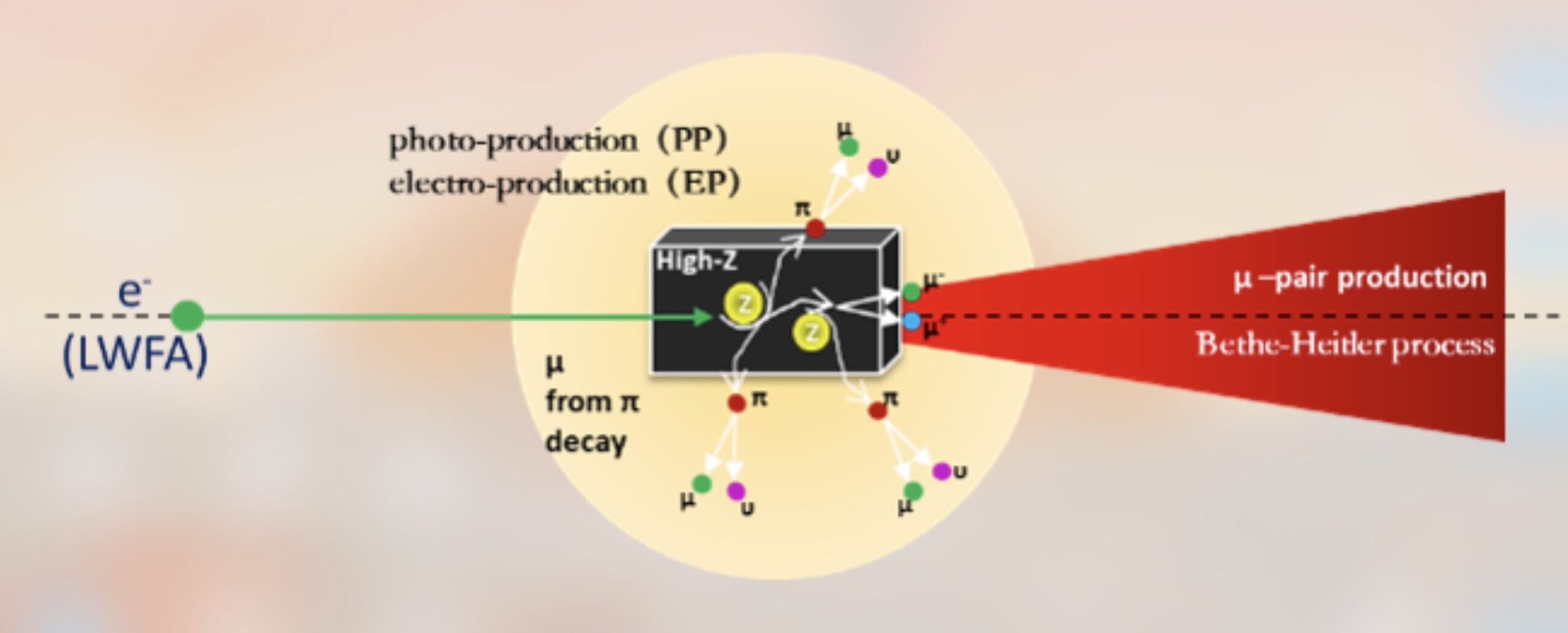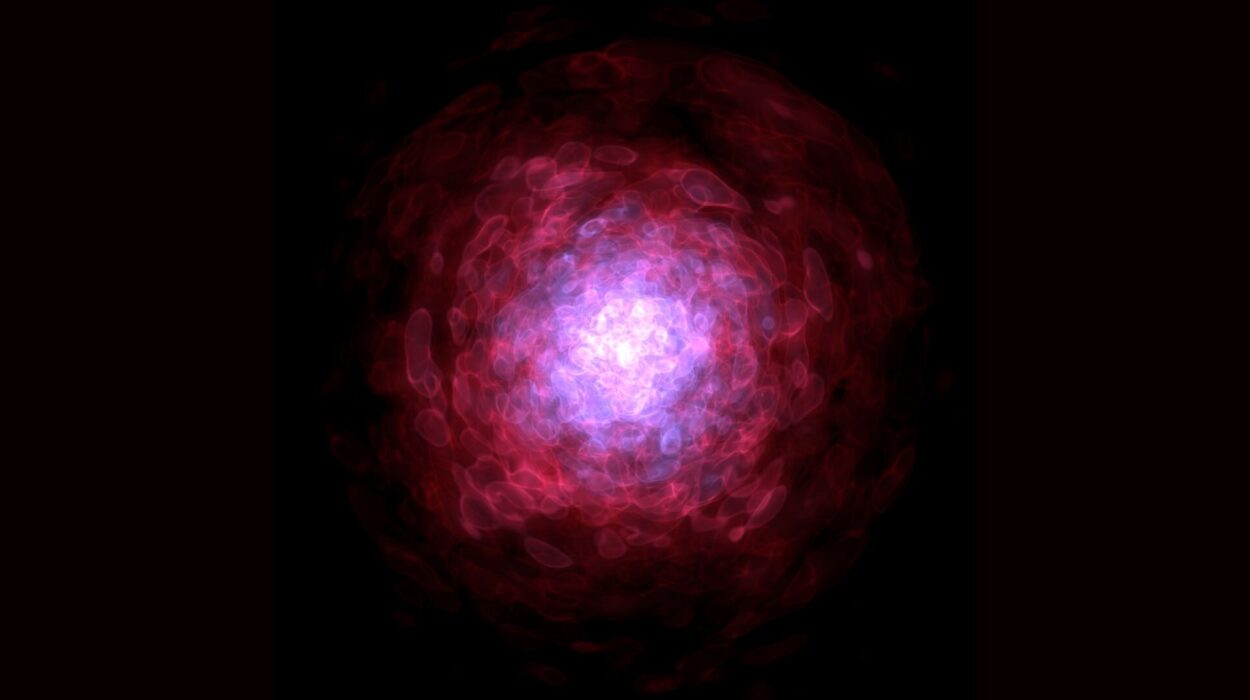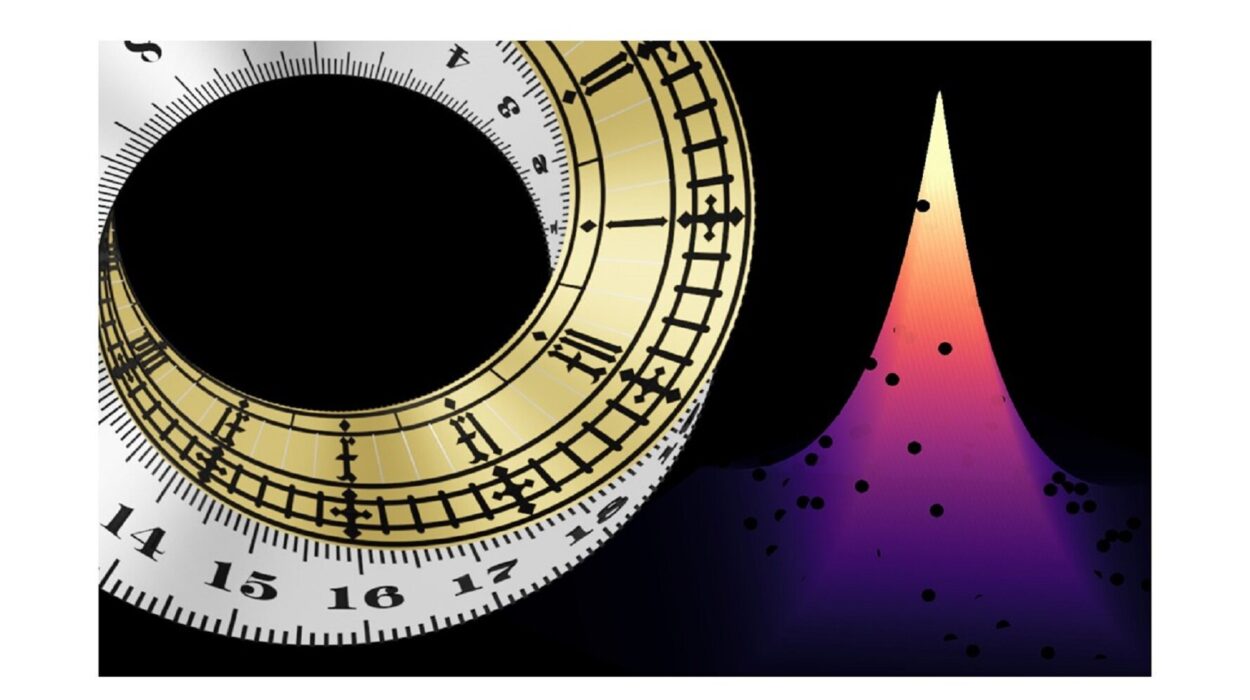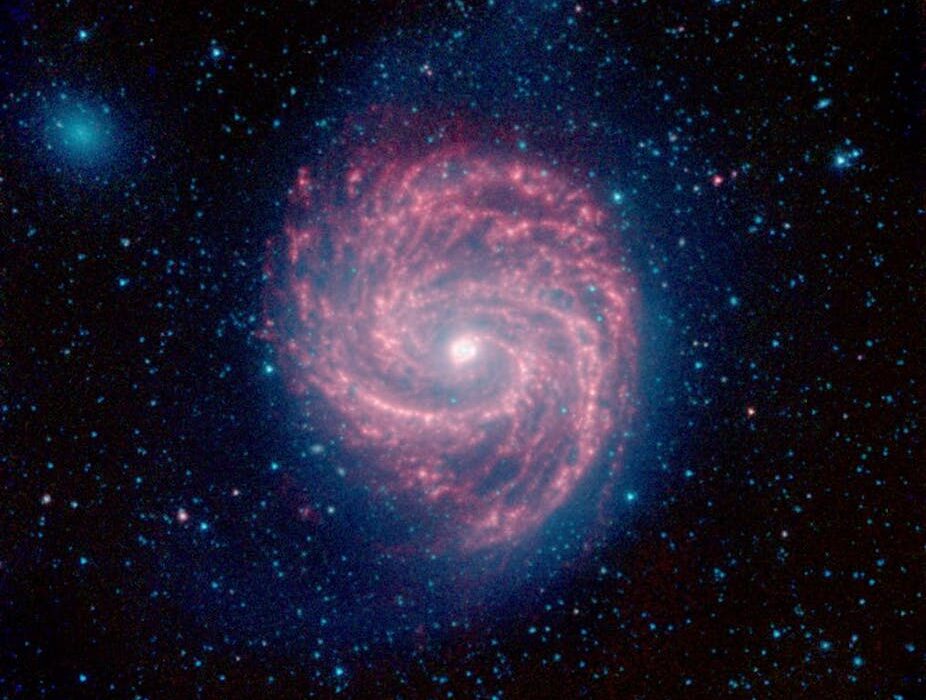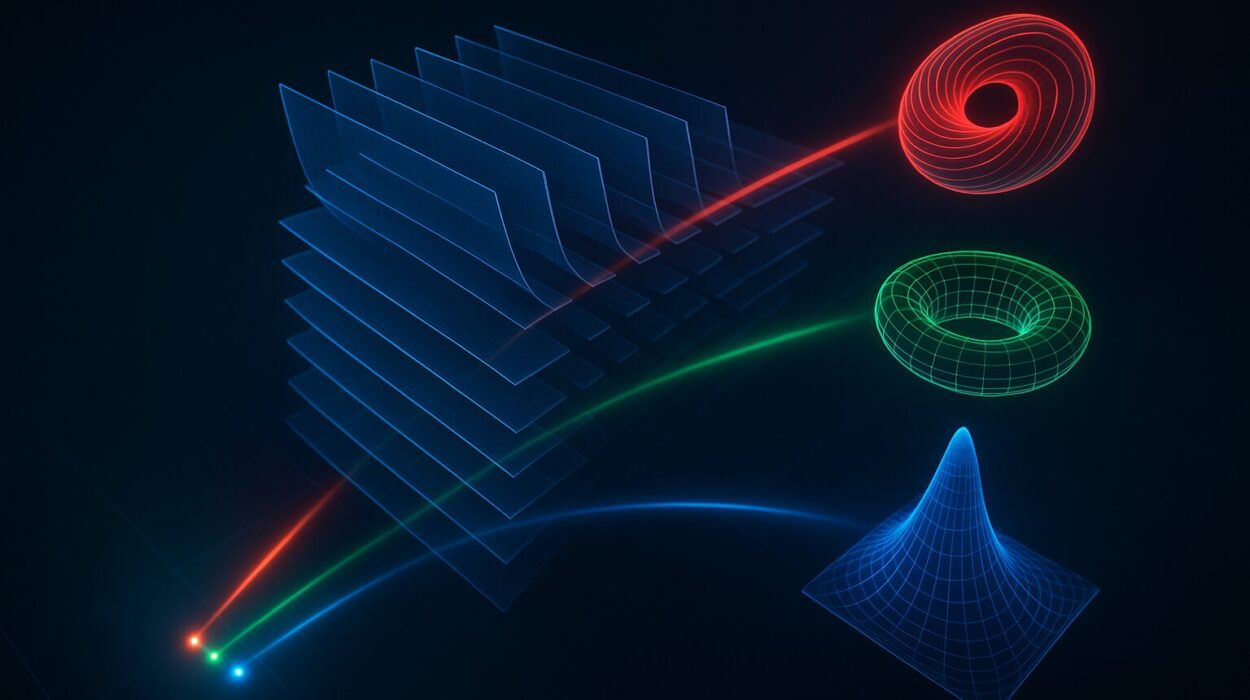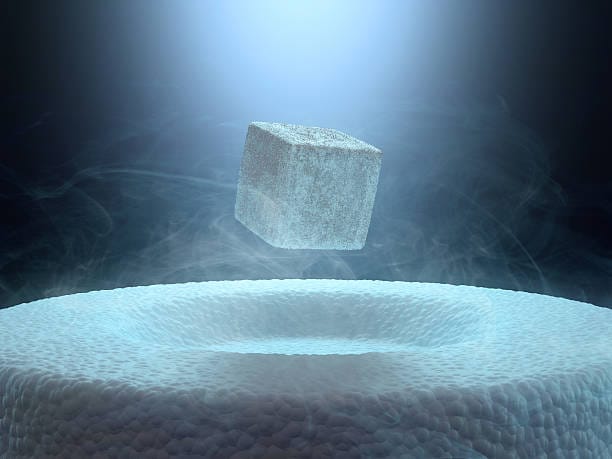In the subatomic world, where the rules of nature bend and twist in ways that defy common sense, one particle has long fascinated physicists for its paradoxical nature: the muon. It’s like the electron’s heavier, moodier cousin—200 times more massive, incredibly unstable, and always vanishing within microseconds. These fleeting particles might seem ephemeral, but their potential is monumental. They’re windows into the quantum fabric of the universe and powerful tools for seeing through mountains, pyramids, and even nuclear reactors.
Until recently, producing muons in any meaningful quantity was the exclusive domain of sprawling, billion-dollar particle accelerators or the random kindness of cosmic rays—those high-energy messengers from deep space that shower Earth with particles after smashing into the atmosphere. But now, in a breakthrough that could transform the landscape of experimental physics, a team of researchers in China has achieved something remarkable: they’ve found a way to generate muons inside a laboratory using ultra-short, high-intensity laser pulses.
This development, published in Nature Physics, is more than just a technical feat. It could democratize access to muon science, unlocking doors to research previously closed to all but the wealthiest and most technologically advanced institutions.
Why Muons Matter
To understand why this is such a big deal, you first need to grasp what makes muons special. Discovered in 1936 in cosmic ray experiments, muons were initially dubbed “the particle nobody ordered” by physicist Isidor Rabi. They didn’t seem to fit neatly into any known framework at the time. Today, we know they belong to the lepton family, alongside electrons and neutrinos, and play a critical role in the Standard Model of particle physics.
But muons do more than fill theoretical gaps. Their hefty mass and short lifetime make them ideal probes of hidden structures. Because they can penetrate deep into matter without being easily scattered or absorbed, muons can be used in muon radiography—a technique that has been used to explore the interiors of volcanoes, ancient tombs, and even the Fukushima nuclear reactor. They’re also essential in experimental techniques like muon spin rotation (μSR) and muon-induced X-ray emission (MIXE), which allow scientists to probe magnetic properties and chemical compositions at the atomic level.
Despite their usefulness, one major problem persists: we don’t have an easy, affordable way to make them—until now.
The Limitations of Traditional Muon Sources
So far, muon production has relied on two major sources: cosmic rays and particle accelerators. Cosmic rays, while fascinating, are incredibly inefficient muon producers. Their rate of muon production at Earth’s surface is less than one particle per square centimeter per minute. It’s barely enough for experimental setups, and their uncontrollable, stochastic nature makes systematic studies difficult.
Then there are proton accelerators. These giant machines accelerate protons to near-light speeds and smash them into fixed targets, generating showers of particles—including muons—as byproducts. This method offers much higher yields but comes at an enormous financial and infrastructural cost. Building and operating such facilities require vast resources, skilled personnel, and energy inputs that are out of reach for most research institutions.
This bottleneck has limited the widespread application of muon-based technologies, keeping them in the realm of national laboratories and high-energy physics centers. But recent developments in laser technology have opened a new avenue that could change everything.
The Laser Revolution in Particle Physics
Over the past few decades, the field of high-intensity laser physics has undergone a quiet revolution. Thanks to a technique called Chirped Pulse Amplification (CPA)—which won its inventors the 2018 Nobel Prize—scientists can now amplify ultra-short laser pulses to intensities high enough to rip electrons from atoms, generate extreme electromagnetic fields, and even accelerate particles.
At the forefront of this laser frontier is Laser Wakefield Acceleration (LWFA), a technique where ultra-intense laser pulses are fired into a plasma, generating waves that can surf electrons up to giga-electron-volt (GeV) energies over distances of just a few centimeters. In traditional accelerators, achieving similar energies would require several kilometers of infrastructure.
Leveraging this powerful toolset, researchers from the China Academy of Engineering Physics, Guangdong Laboratory, and the Chinese Academy of Sciences set out to generate muons from scratch using nothing more than a laser, a conversion target, and a brilliant new idea.
How to Build a Muon: The New Approach
The process is, in principle, deceptively simple. First, a high-energy laser pulse accelerates a bunch of electrons to GeV-level energies via LWFA. These fast-moving electrons are then directed into a high-Z (high atomic number) conversion target, such as tungsten or lead. As the electrons crash into the dense material, they initiate a cascade of secondary processes: gamma rays, positrons, neutrons, and, crucially, muon pairs—muons and their antiparticle counterparts, anti-muons.
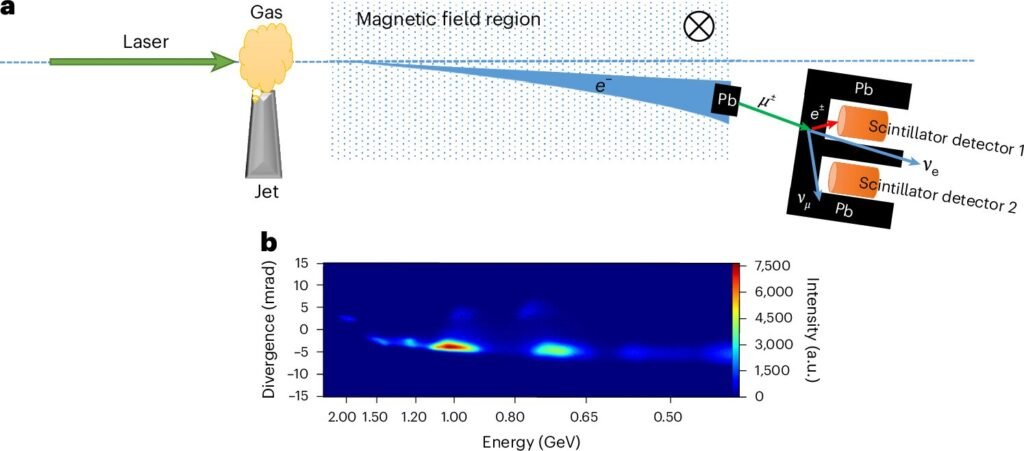
The actual generation of muons in this chaotic shower is governed by complex quantum electrodynamic interactions. And herein lies the challenge: among the many particles produced, muons are relatively rare. Their production cross-section—a measure of the likelihood of their formation—is low. Moreover, traditional detection methods like magnetic spectrometers often fail because they’re swamped by other, more numerous particles like electrons and gamma rays.
So how do you prove you’ve made a muon in such a noisy environment?
Decoding the Particle Zoo with Time
The genius of the Chinese team’s work lies not only in producing muons but in how they detected them. Instead of relying on magnetic fields to separate particles by mass and charge, they used the one property that makes muons stand out: their decay lifetime.
Muons live, on average, for about 2.2 microseconds at rest before decaying into an electron and two neutrinos. This short lifetime is like a fingerprint—a time signature that clearly distinguishes muons from other particles. By building detectors capable of recording delayed signals and filtering out the prompt (instantaneous) bursts from gamma rays and electrons, the team could isolate the telltale decay of muons.
“We generated a muon source for the first time on a new platform at a laser laboratory,” said Yuqiu Gu, co-author of the paper. “We reached a yield of 0.01 μ/e. Taking this experiment as an example, the muon yield can reach 10⁷ muons per shot.”
These are extraordinary numbers. In experimental terms, they indicate a high-yield muon source that can be turned on and off with each laser pulse. Moreover, supplementary estimates suggest the possibility of generating surface muons and decay muons at rates exceeding 10³ muons per second, making the system not only viable but practically useful.
Implications for Science and Society
The ability to generate muons in a tabletop laboratory isn’t just a cool trick—it could be transformative. With this technology, smaller institutions and universities could enter the world of muon science without needing access to a national particle accelerator. It democratizes a previously elite field.
Potential applications span across disciplines. In materials science, muons can probe magnetism and superconductivity at the microscopic level. In geology and civil engineering, muon radiography can scan dense structures like mountains, tunnels, and dams with unmatched precision. In nuclear physics, muons can be used to induce rare nuclear reactions or help detect concealed materials.
The new method also opens avenues for more exotic experiments. The team plans to explore all-optical muon acceleration and muon-induced nuclear excitation, areas previously relegated to science fiction or the distant wishlists of theorists. There’s even potential for synergy with antimatter research, fusion experiments, and fundamental tests of the Standard Model.
The Road Ahead: Scaling, Refinement, and Innovation
While the achievement marks a significant milestone, it’s only the beginning. According to Gu and his colleagues, the next phase will focus on characterizing the muon source more precisely. This includes mapping out the energy spectrum and angular distribution of the emitted muons, both of which are critical for tailoring them to specific applications.
There are also engineering challenges to overcome. Improving detector sensitivity, refining beam alignment, and increasing repetition rates will all be part of the work needed to transition from proof-of-principle to practical tool.
Nonetheless, the outlook is promising. With continued investment in laser technology and diagnostic techniques, it’s entirely plausible that laser-based muon sources could become standard fixtures in advanced laboratories worldwide within the next decade.
Conclusion: A New Era in Particle Physics
At its heart, this research represents a leap of imagination as much as a leap of technology. By rethinking how we generate particles—moving from traditional behemoths like synchrotrons to nimble, precise laser systems—physicists are entering a new paradigm of accessibility, efficiency, and creativity.
The muon, once a cosmic oddity and a luxury of mega-projects, is now within reach of any lab with a high-powered laser and a bold enough vision. In a field defined by the unseen, sometimes it takes a burst of light to illuminate the next frontier.
Reference: Feng Zhang et al, Proof-of-principle demonstration of muon production with an ultrashort high-intensity laser, Nature Physics (2025). DOI: 10.1038/s41567-025-02872-2.
